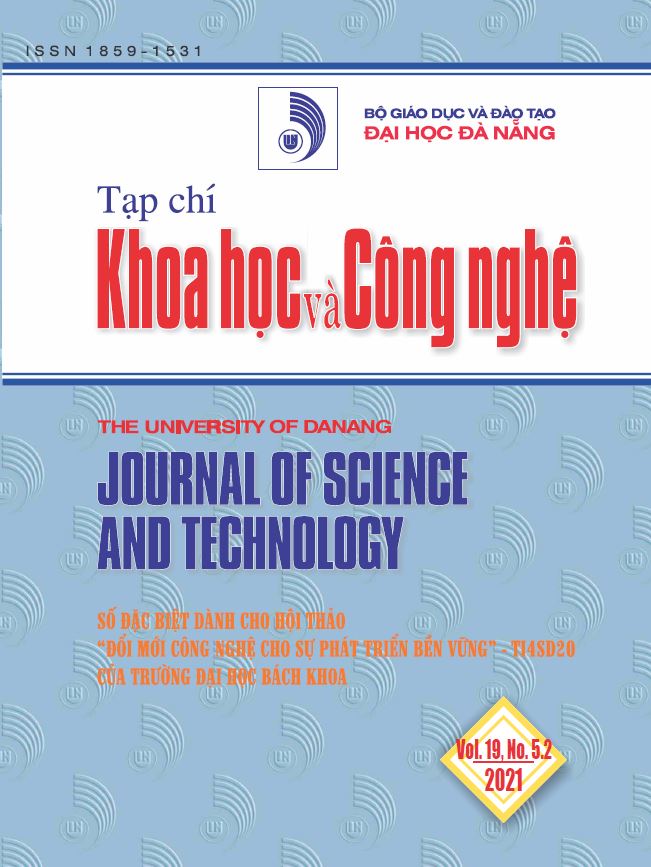Xây dựng mô hình phân loại và dự báo lỗi sản xuất vải
 Tóm tắt: 116
Tóm tắt: 116
 |
|  PDF: 71
PDF: 71 
##plugins.themes.academic_pro.article.main##
Author
-
Huynh Nhat To
Từ khóa:
Phân loại sản phẩm
dự báo lỗi
mạng nơ-ron
sản xuất vải
Tóm tắt
Việc phân loại và dự báo lỗi sản phẩm giúp cho các nhà sản xuất giảm thiểu chi phí, đồng thời nâng cao chất lượng và lợi nhuận. Nhiều nghiên cứu đã được thực hiện đối với các ngành sản xuất công nghệ cao. Tuy nhiên, chỉ có vài nghiên cứu được thực hiện đối với sản xuất vải, gạch men,… Hầu hết các nhà máy sản xuất này đang vận hành hệ thống phân loại thủ công và công nghệ lạc hậu. Với sự thay đổi nhanh chóng của nền sản xuất, các nhà máy cần phải đẩy mạnh qua trình quản lý vận hành của mình. Nghiên cứu này đã xây dựng một mô hình có thể phân loại và dự báo lỗi sản phẩm trong việc sản xuất vải. Dựa trên các kết quả đánh giá đã cho thấy được tính hiệu quả của mô hình.
Tài liệu tham khảo
-
[1] Huynh, N.T. (2020). “Online defect prognostic model for textile manufacturing”, Resource, conservation and recycling, 104910.
[2] Chi, H.-M., Moskowitz, H., Ersoy, O.K., Altinkemer, K., Gavin, P.F., Huff, B.E. and Olsen, B.A. (2009). “Machine learning and genetic algorithms in pharmaceutical development and manufacturing processes”. Decision Support Systems, 69-80.
[3] Choudhary, A.K., Harding, J.A. and Tiwari, M.K. (2009). “Data mining in manufacturing: a review base d on the kind of knowledge”. Journal of Intelligent Manufacturing, 501-521.
[4] Ciflikli,C.and Kahya Özyirmidokuz, E.(2010). “Implementing a data mining solution for enhancing carpet manufacturing productivity”. Knowledge-Based Systems, 783-788.
[5] Harding, J., Kusiak, A. and Shahbaz, M. (2006). “Data mining in manufacturing: A review”. Journal of Manufacturing Science and Engineering, 969-976.
[6] Kusiak, A. (2006). “Data mining: manufacturing and service applications”.
[7] International Journal of Production Research, 4175-4191.
[8] Jackson,J. (2002). “Data mining: a conceptual overview”. Communications of the Association for Information Systems, 267-296.
[9] Turban, E., Sharda, R. and Delen, D. (2011). Decision Support and Business Intelligence Systems, Pearson Education, Upper Saddle River, NJ.
[10] Wang, K. (2013). “Towards zero-defect manufacturing (ZDM) − a data mining approach”. Advances in Manufacturing, 62-74.
[11] Dean, J. (2014). “Case study of a high-tech product manufacturer”. Big Data, Data Mining, and Machine Learning: Value Creation for Business Leaders and Practitioners, John Wiley & Sons Inc., Hoboken, 229-232.
[12] Tan, S.C., Watada, J., Ibrahim, Z. and Khalid, M. (2014). “Evolutionary fuzzy ARTMAP neural networks for classification of semiconductor defects”. IEEE Transactions on Neural Networks and Learning Systems, doi:10.1109/TNNLS.2014.2329097.
[13] Yuen, C., Wong, W., Qian, S., Chan, L. and Fung, E. (2009). “A hybrid model using genetic algorithm and neural network for classifying garment defects”. Expert Systems with Applications, 2037-2047.
[14] Hsu, S.-C. and Chien, C.-F. (2007). “Hybrid data mining approach for pattern extraction from Wafer Bin Map to improve yield in semiconductor manufacturing”. International Journal of Production Economics, 88-103.
[15] Hsieh, K.-L., Tong, L.-I. and Wang, M.-C. (2007). “The application of control chart for defects and defect clustering in IC manufacturing based on fuzzy theory”. Expert Systems with Applications, 765-776.
[16] Hessinger, U., Chan, W. and Schafman, B. (2014). “Data mining for significance in yield-defect correlation analysis”. IEEE Trans Semicond Manuf IEEE Transactions on Semiconductor Manufacturing, 347-356.
[17] Davenport, T.H. (2006). “Competing on analytics”. Harvard Business Review, 150-151.
[18] Perzyk, M., Kochanski, A., Kozlowski, J., Soroczynski, A. and Biernacki, R. (2014). “Comparison of datamining tools for significance analysis of process parameters inapplications to process fault diagnosis”. Information Sciences, 380-392.
[19] Huynh, N.-T., Chien, C.-F. (2018). “A Hybrid Multi-subpopulation Genetic Algorithm for Textile Batch Dyeing Scheduling and an Empirical Study”. Computers & Industrial Engineering, 125, 615-627.
[20] Chin, R. T., & Harlow, C. A.(1982). “Automated visual inspection: A survey”. IEEE Trans. Patt. Anal. Machine Intell, 557-573.
[21] Newman, T. S., & Jain, A. K. (1995). “A survey of automated visual inspection”. Comput. Vis. Image Under, 231-262.
[22] Thomas, A. D. H., Rodd, M. G. J, Holt, D. & Neill, C.J. (1995). “Real-time Industrial Inspection: A Review”. RealTime Imaging, 139-158.
[23] Patile, P., Turukmane, R., and Raichurkar, P. P., (2017). “Comparative Analysis of Sizing Machine Parameters on Weaving Performance”. International Journal on Textile Engineering and Processes, 3, 31-35.
[24] Conci, A. & Proença, C. B. (1998). “A fractal image analysis system for fabric inspection based on box-counting method”. Computer Networks and ISDN Systems, 1887-1895.
[25] Kumar, A. (2003). “Neural network based detection of local textile defects”. Pattern Recognition, 1645-1659.
[26] Hung, C.-C. & Chen, I.-C. (2001). “Neural-Fuzzy classification for fabric defects”. Text.Res. J., vol. 71(3), 220-224.
[27] Sheen, S.H., Chien, S.H., Lawrence, W.P., & Raptis, A.C. (1997). “Ultrasonic imaging system for inprocess fabric defect detection”. US Patent No. 5, 665- 907.
[28] Cole, F. A. & Deak, R. L.(1981). “Defect detection system”. US Patent No.4, 249,081.
[29] Srinivasan, K. P., Dastor, H., Radhakrishnaihan, P., & Jayaraman, S. (1992). “FDAS: A knowledge-based frame detection work for analysis of defects in woven textile structures”, J. Text. Inst, 431-447.
[30] Tsai, I.-S., Lin, C.-H., & Lin, J.-J. (1998). “Application of fuzzy set theory to diagnosis system for tracing breakdown causes in weaving”. Int. J. Fuzzy Systems, 200-207.
[31] Perner, P. (1994). “A knowledge-based image-inspection system for automatic defect recognition, classification, and process diagnosis”. Machine Vision & Appl, 135-147.
[32] Tuceryan, M., & Jain, A. K. (1993). “Texture Analysis”. Handbook of Pattern Recognition and Computer Vision, C. H. Chan, L. F. Pau, and P. S. P. Wang (Eds.), Ch.2, 235-276, Singapore: World Scientific.
Xem thêm
Ẩn bớt
##plugins.themes.academic_pro.article.sidebar##
Đã Xuất bản
May 31, 2021
Download
Cách trích dẫn
Huynh Nhat To. “Xây dựng Mô hình phân loại Và dự báo lỗi sản xuất vải”. Tạp Chí Khoa học Và Công nghệ - Đại học Đà Nẵng, vol 19, số p.h 5.2, Tháng Năm 2021, tr 25-28, https://jst-ud.vn/jst-ud/article/view/7508.



